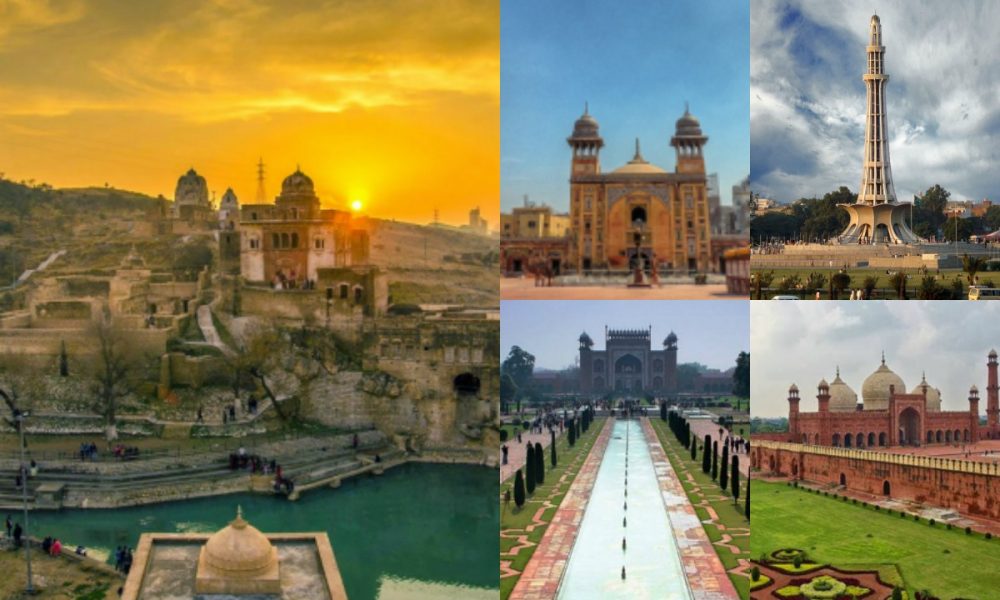Punjab In Pakistan
Punjab In Pakistan

Punjab (pun'jäb') [Pers.,=five rivers], notable area in the NW of the Indian subcontinent. Since 1947 it has been isolated into an Indian state and a Pakistani area bearing a similar name. The Indus River limits the district in part of the west and the Yamuna River in part of the east. The five streams that give Punjab its name, the Jhelum, the Chenab, the Ravi, the Sutlej, and the Beas, converge to frame the Panjnad, which streams into the Indus. But in the north, where there are forested mountains yielding salt and coal, the Punjab is a level alluvial plain. Precipitation is insufficient and sporadic, yet broad water system frameworks utilizing the waters of the considerable streams have made conceivable huge agrarian profitability. Wheat (by a long shot the main harvest), millet, grain, cotton, and sugarcane are developed, and there are broad natural product plantations. The Punjab has an expansive material industry and much flour processing. Correspondences (by street, by rail, and on the streams) are superb. Over 60% of the number of inhabitants in Punjab is Sikh (see Sikhism).
History

The district, arranged athwart the principle ways to deal with the Indian subcontinent, shaped one of the focuses of the ancient Indus valley human advancement, and after c.1500 BC it was the site of the most punctual Aryan settlements. The Punjab was possessed by Alexander the Great and after that by the Maurya domain. Muslims possessed W Punjab by the eighth penny. also, immovably embedded Islam. Not until the late twelfth penny. did they overcome E Punjab, which even thereafter remained transcendently Hindu. Under the Mughal realm the Punjab achieved its social tallness. At the point when the realm declined in the late eighteenth penny., the Sikhs rose to strength. By the mid nineteenth penny. their regional glorification carried struggle with the British, who rose triumphant in the two Sikh Wars (1846, 1849) and in 1849 attached a large portion of the Punjab and made it a region, however a portion of the regal states were held.
With the making of Pakistan in 1947, the Punjab was apportioned around along the line between the primary centralizations of the Muslim and the Hindu populaces. The western part turned into the Pakistan area of West Punjab (renamed just Punjab in 1949; 1998 pop. 72,585,430; c.58,000 sq mi/150,220 sq km) with its capital at Lahore.
The Indian segment (c.91,000 sq mi/235,690 sq km) of the Punjab was isolated after parcel into three territories. The various Punjab slope states were converged into the union domain of Himachal Pradesh (now a state), other august states were framed into the union region of Patiala and East Punjab States Union, and the rest of the territory turned into the Indian province of East Punjab. In 1956 East Punjab and Patiala and East Punjab States Union were converged to shape the territory of Punjab. In a further revamping in 1966, Punjab was partitioned into two states: Hindi-speaking Haryana and Punjabi-speaking Punjab (2001 temporary pop. 24,289,296), 19,764 sq mi (51,189 sq km). The capital of Punjab is Chandigarh. Other essential urban communities in Punjab are Amritsar, Jalandhar, and Ludhiana. A third segment of the previous Punjab was added to Himachal Pradesh.
Sikh separatists have looked for a free Sikh state since 1947. The development developed more aggressor notwithstanding endeavors by India's focal government to smother the development through military activity, jailings, concessions to moderates, and inward subversion, and amid the 1980s thousands kicked the bucket and Prime Minister Indira Gandhi was killed. Peace has now returned, however Punjab has not recovered its previous financial power. Punjab is represented by a central clergyman and bureau mindful to a bicameral lawmaking body with one chose house and by a senator named by the leader of India.





Great
ReplyDelete